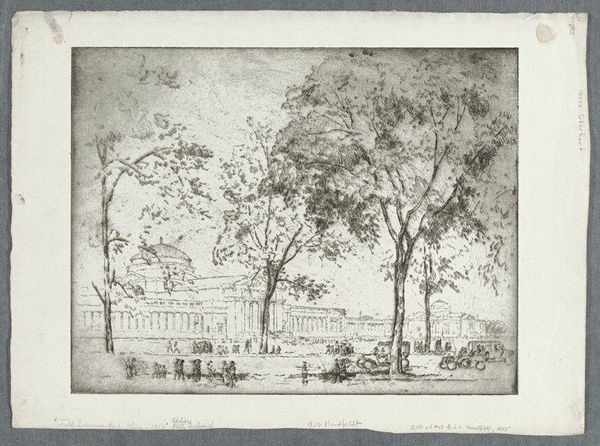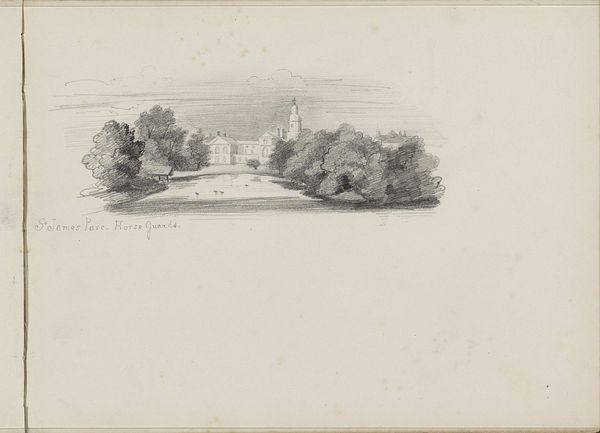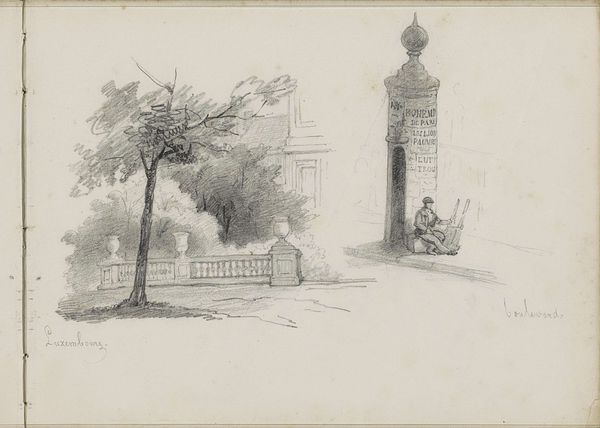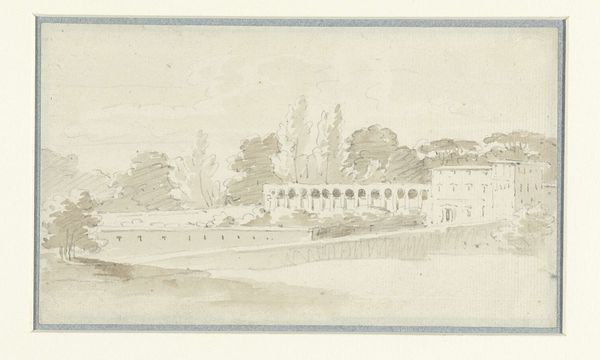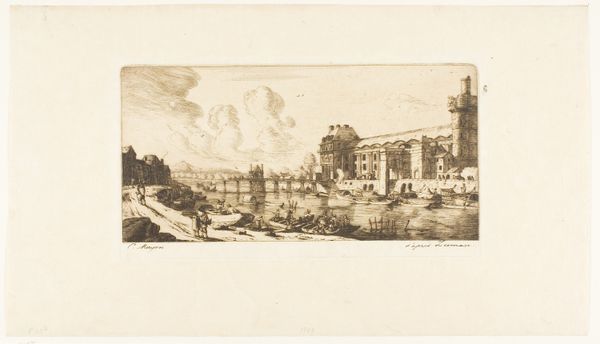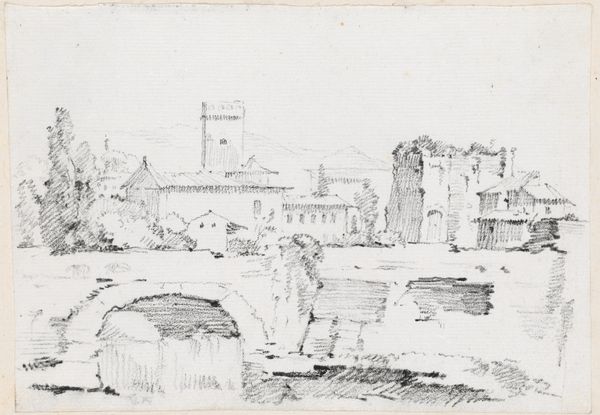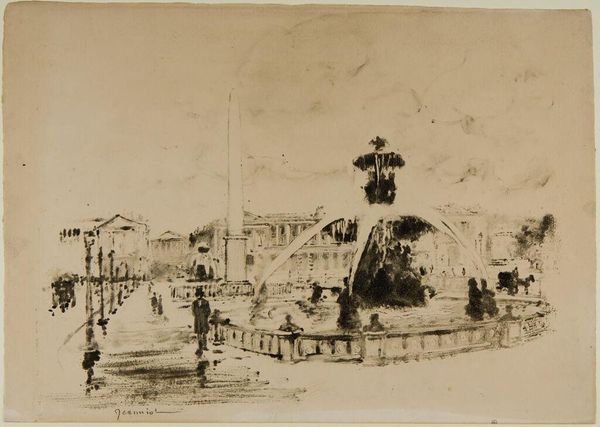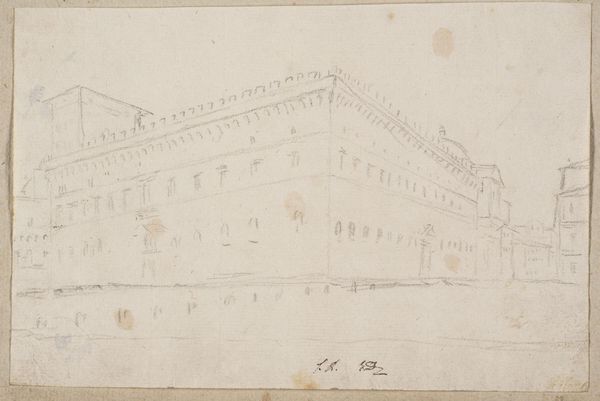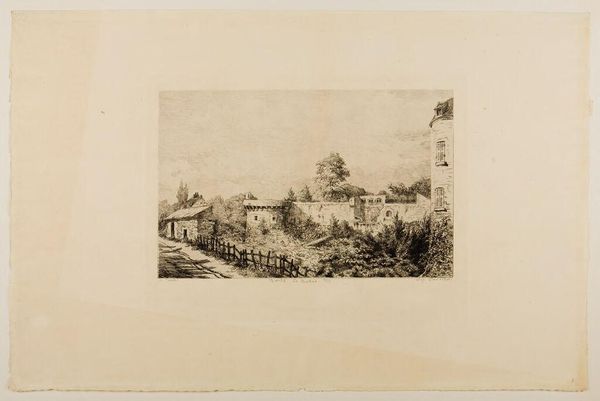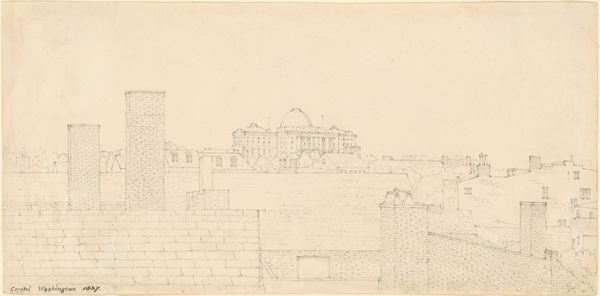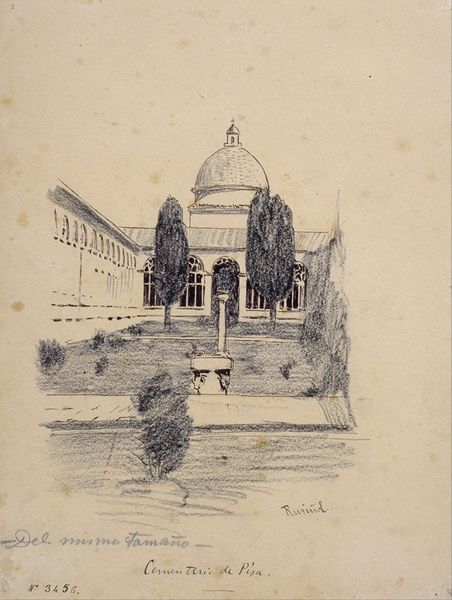
Dimensions: height 210 mm, width 275 mm
Copyright: Rijks Museum: Open Domain
Gerrit Postma rendered this drawing of part of London's Crystal Palace, constructed of iron and glass, using graphite. The Crystal Palace, originally built for the Great Exhibition of 1851, was a symbol of Victorian England's industrial and imperial power. Postma's drawing reflects the cultural fascination with progress and modernity that defined the era. While the Crystal Palace represented innovation and global reach, it also stood as a backdrop to significant social inequalities. The structure itself was built using resources and labor drawn from across the British Empire, highlighting the complex relationship between industrial advancement and colonial exploitation. Consider the experiences of those whose labor and resources contributed to its construction, as well as those who were excluded from the narrative of progress celebrated within its walls. Reflect on how places of spectacle can both inspire awe and mask underlying social injustices.
Comments
No comments
Be the first to comment and join the conversation on the ultimate creative platform.

